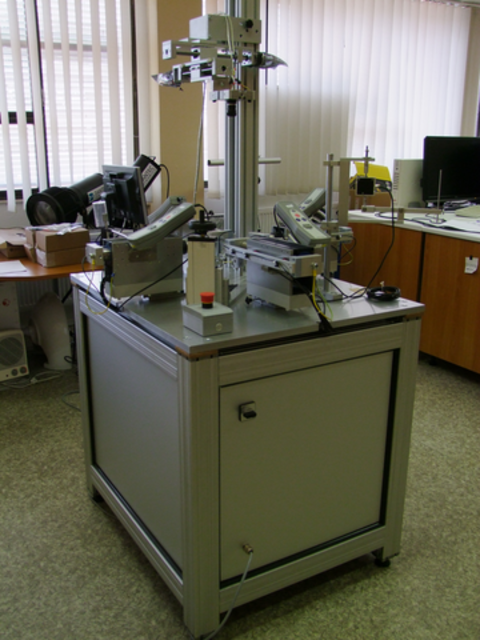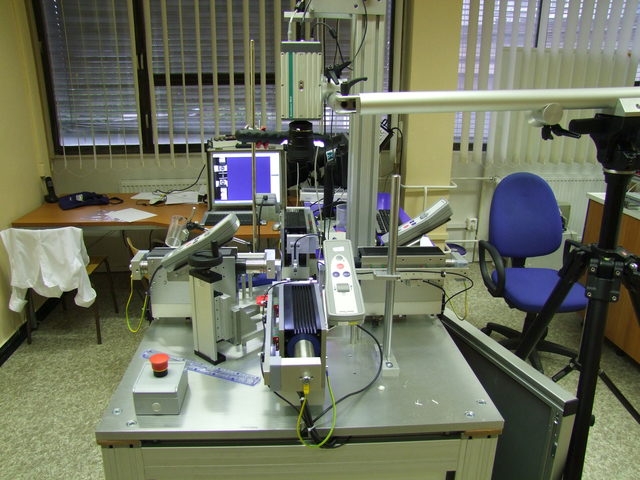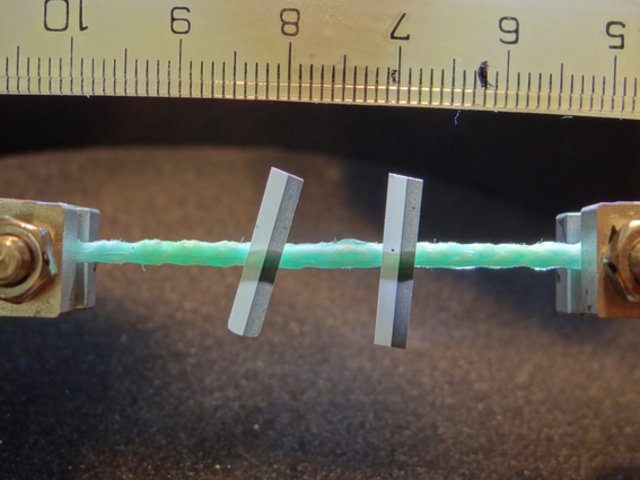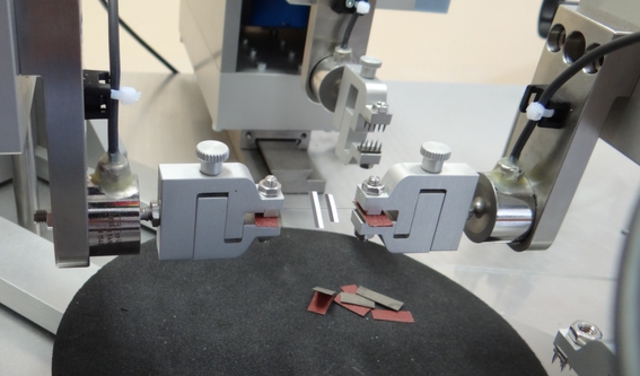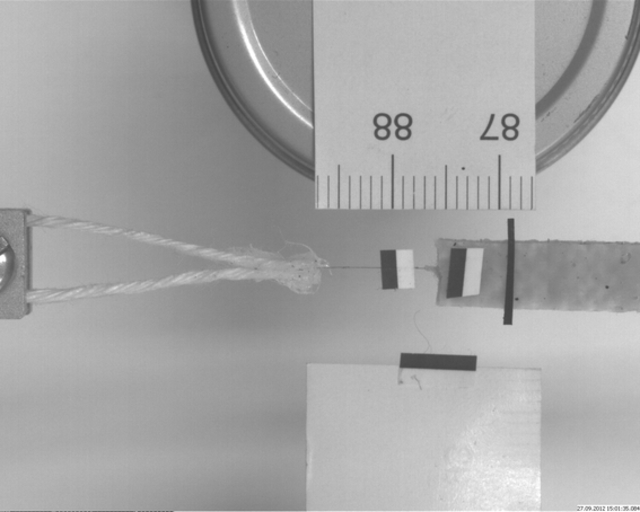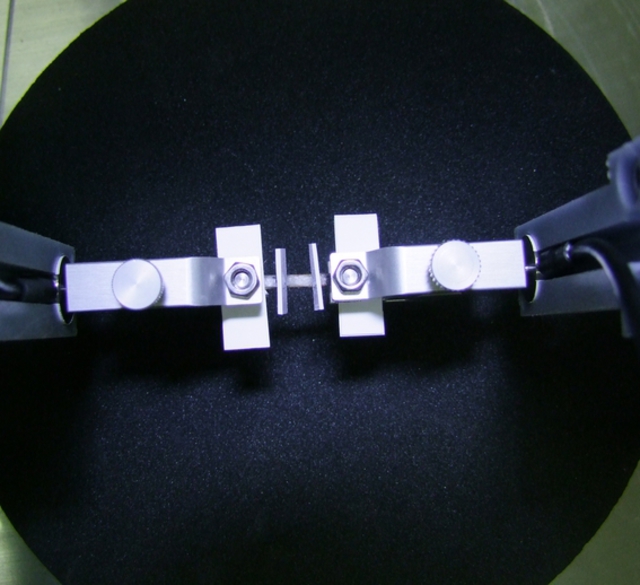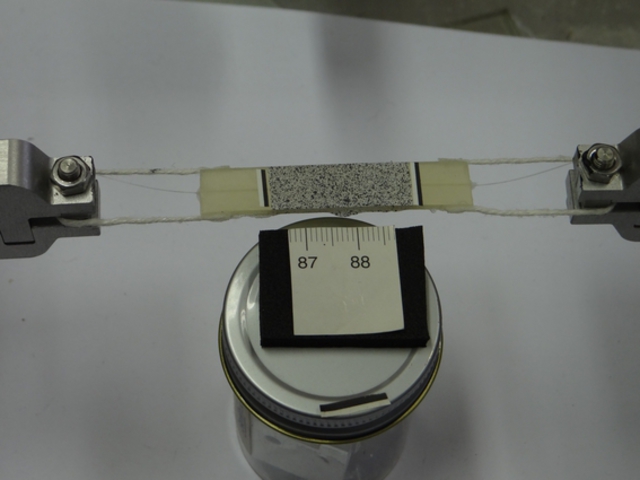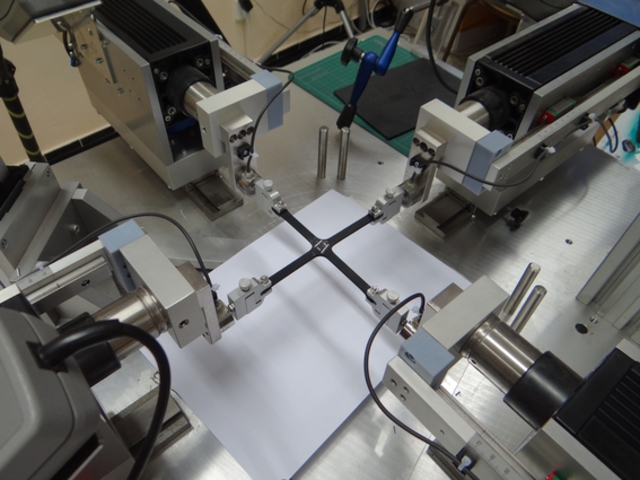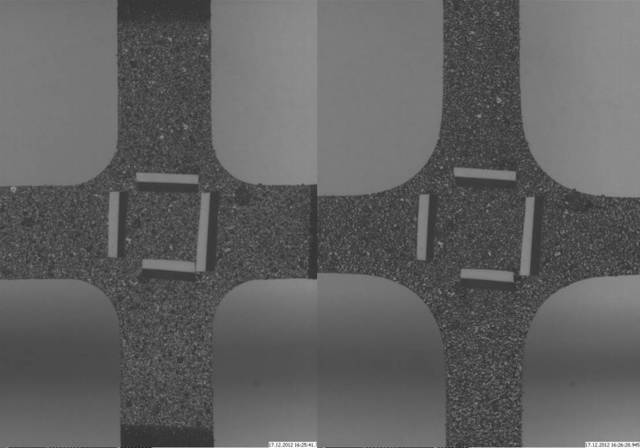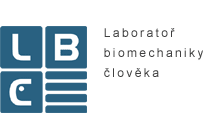
Experimental equipment
Biaxial testing machine for soft tissue and elastomer mechanical testing
Project description:
Anisotropic materials require multiaxial mechanical testing within material parameters estimation. The laboratory is equipped with biaxial tensile testing machine Zwick/Roell optimized for soft tissues (arteries, veins, ligaments, skin etc.) and elastomers.
Technical data
- Loading
Loading direction: tension/compression
Loading axes: uniaxial; biaxial, on demand we can change the set up to in-plane tension
+ out-of plane scratch
Loading function: monotonic, cyclic, relaxation, creep, and full prescribed time dependence
- Load cell
-50N to +50N
-250N to +250N
U9B HBM Data sheet
- Extensometers
Internal: laser interferometry (Zwick/Roell) or videoextensometer (Zwick/Roell)
http://www.messphysik.com/fileadmin/messphysikdaten/Download/Video_extensometer_en.pdf
http://www.messphysik.com/fileadmin/messphysikdaten/Download/PDS_161_J_en_LSE.pdf
External: high-speed camera (Dantec Dynamics)
- Actuators
4x travel 70mm
0 – 30mm/s
resolution 1um
- Sampling rate
internal 500Hz
external record 100Hz
Contact person – Lukas Horny
Location – Cardiovascular laboratory
Homepage of the companny (Zwick/Roell, division Messphysik).
Examples of experiments
Uniaxial tensile test of silicon-textile (PES) composite reinforced with NiTi filament.
Uniaxial tensile test with fine NiTi wire.
Pull-out test of NiTi fiber and silicon-textile matrix to determine quality of adhesive bond between fiber and matrix.
Sample of human pericardium under uniaxial tension.
Sample of a latex in uniaxial tension for comparison between different extensomoter methodologis - 1. 2D digital image correlation (B/W spary on the surface); 2. built-in videoextensometer (B/W strips); and 3. FBG sensor (optical fiber is protruded out of the sample).
Biaxial tensile test with a rubber (equbiaxial deformation).
Reference and deformed state of rubber sample under biaxail tension (B/W strips are for videoextensometer, B/W fine pattern is also speayed onto sample to conduct 2D DIC strain measurement).
doc. Ing. Lukáš Horný Ph.D. ; Hynek Chlup


